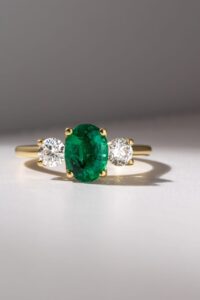Jousters Weapon
Jousters Weapon: An In-Depth Exploration
The Medieval Sport of Jousting
Jousters Weapon Jousting, a thrilling and chivalric sport, captured the hearts and imaginations of medieval Europe. Central to this dangerous yet captivating sport were the weapons wielded by the jousters. These weapons, primarily designed for the tiltyard, were not just tools of competition but symbols of honor, skill, and nobility.Jousters Weapon
The Role of Weapons in Jousting
Importance in Tournaments
In medieval tournaments, the weapons used by jousters were critical to the event’s spectacle and outcome. Weapons determined the nature of the contest, the strategies employed, and often the reputation of the participants. Understanding these tools provides insight into the skills and valor celebrated in these historical events.
Types of Jousting Weapons
Lances
The lance was the quintessential weapon of jousting. These long, pointed spears were designed for mounted combat, where the objective was to unhorse an opponent with a direct hit. Lances varied in length, weight, and material, but they all shared the common purpose of delivering a decisive strike.
Swords
While the lance was the primary weapon, swords were also vital in jousting, especially during mêlée tournaments. These swords were designed for durability and efficiency in close combat, allowing knights to engage in fierce battles once they were dismounted or after the initial pass with the lance.
Daggers
Daggers were used as secondary weapons, often as a last resort in the close quarters of a melee. These small, easily maneuverable blades were crucial for personal defense and could be lifesaving in the chaos of a tournament.
Evolution of Jousting Weapons
Early Medieval Period
In the early medieval period, jousting weapons were relatively simple, reflecting the era’s rudimentary combat techniques. Early lances were more akin to sharpened poles, and swords were straightforward in design.
High Medieval Period
The high medieval period saw significant advancements in the design and craftsmanship of jousting weapons. Lances became more specialized, with features such as blunted tips for safety. Swords also evolved, with improvements in metallurgy allowing for stronger, sharper blades.
Late Medieval Period
By the late medieval period, jousting weapons had reached a high degree of sophistication. Lances were often fitted with coronals (special tips designed to reduce fatal injuries), and swords were meticulously crafted, balancing strength with ornate designs that showcased a knight’s status.
Materials Used in Jousting Weapons
Wood
Lances were typically made from strong, flexible woods like ash or oak. The choice of wood affected the lance’s durability and performance, with craftsmen selecting materials that balanced weight and strength.
Metal
Swords and dagger blades were forged from various metals, with advancements in metallurgy enhancing their effectiveness. Steel became the preferred material, known for its hardness and ability to hold a sharp edge.
Innovations in Design
Innovations in weapon design were driven by both practical needs and technological advancements. For example, the hollow lance, designed to shatter upon impact, minimized the risk of severe injury, reflecting an increasing concern for safety in tournaments.
Manufacturing Jousting Weapons
Craftsmanship
The creation of jousting weapons required skilled craftsmanship. Each weapon was a product of meticulous labor, with blacksmiths and artisans pouring hours into forging and shaping these tools of chivalry.
Blacksmiths and Artisans
Blacksmiths and specialized artisans were the unsung heroes behind jousting weapons. Their expertise in metalworking and woodworking was crucial in producing weapons that were both functional and beautiful.
Weaponry in Different Jousting Styles
French Jousting
French jousting often emphasized grace and style, with weapons reflecting this cultural nuance. The lances and swords used were often adorned with intricate decorations, showcasing the knight’s wealth and status.
English Jousting
English jousting was characterized by its emphasis on brute strength and endurance. The weapons used in English tournaments were robust and straightforward, designed to withstand intense combat.
German Jousting
German jousting, known for its rigorous rules and high standards, required weapons that were both precise and reliable. German lances and swords were engineered for accuracy and efficiency, reflecting the meticulous nature of German chivalry.
Iconic Jousting Weapons
Famous Lances
Some lances became legendary, associated with famous knights and their exploits. These iconic weapons are celebrated in tales and songs, symbolizing the heroism of their wielders.
Notable Swords
Similarly, certain swords gained fame through their association with renowned knights. These blades, often passed down through generations, became symbols of family honor and martial prowess.
Symbolism and Decoration
Heraldic Symbols
Jousting weapons were often decorated with heraldic symbols, representing the knight’s lineage, allegiance, and achievements. These symbols added a layer of meaning and identity to the weapons.
Ornate Designs
Beyond heraldry, weapons were also embellished with ornate designs, including engravings and inlays. These decorations not only showcased the knight’s status but also reflected the artistic trends of the period.
Training with Jousting Weapons
Techniques
Training with jousting weapons was an essential part of a knight’s preparation. Techniques were developed to maximize effectiveness, whether in the precision of a lance strike or the dexterity of swordplay.
Training Regimens
Knights followed rigorous training regimens to hone their skills. These regimens included practicing with various weapons, physical conditioning, and mock combats to simulate the pressures of a real tournament.
Jousting Weapons in Literature and Media
Depictions in Books
Jousting weapons have been vividly depicted in literature, from medieval romances to modern novels. These portrayals often highlight the drama and valor of the jousting knight, bringing the weapons and their stories to life.
Portrayals in Movies and TV
Movies and TV shows have also brought jousting weapons to the screen, often emphasizing their grandeur and historical significance. These portrayals, while sometimes dramatized, contribute to the enduring fascination with jousting.
Preservation of Jousting Weapons
Museums and Collections
Many jousting weapons are preserved in museums and private collections, where they are studied and admired. These institutions play a vital role in maintaining the historical legacy of these remarkable artifacts.
Restoration Techniques
Restoring jousting weapons requires specialized knowledge and skills. Experts work meticulously to conserve these items, ensuring that future generations can appreciate their historical and cultural significance.
The Legacy of Jousting Weapons
Influence on Modern Sports
The legacy of jousting weapons can be seen in modern sports, such as fencing and equestrian events. These contemporary sports retain elements of the skill and tradition of medieval jousting.
Cultural Impact
Jousting weapons have left an indelible mark on our culture, symbolizing the ideals of chivalry, bravery, and honor. They continue to inspire fascination and admiration, reflecting the enduring allure of the medieval knight.
FAQs
What were the main weapons used in jousting?
The primary weapons used in jousting were the lance, sword, and dagger. The lance was used for mounted combat, while the sword and dagger were essential for close-quarter fighting.
How were jousting lances made?
Jousting lances were typically made from strong woods like ash or oak. They were designed to be both flexible and durable, with some featuring hollow shafts to break upon impact for safety.
Why did knights use blunted lances?
Knights used blunted lances, known as coronals, to reduce the risk of fatal injuries during tournaments. This innovation allowed jousting to remain a competitive yet safer sport.
What role did blacksmiths play in jousting?
Blacksmiths were crucial in the creation of jousting weapons. Their expertise in metalworking ensured that swords and daggers were strong, sharp, and reliable for tournament use.
How did jousting weapons evolve over time?
Jousting weapons evolved significantly over the medieval period, with improvements in design, materials, and craftsmanship. Early weapons were simple, but by the late medieval period, they














Post Comment